A Bergen Shipowner
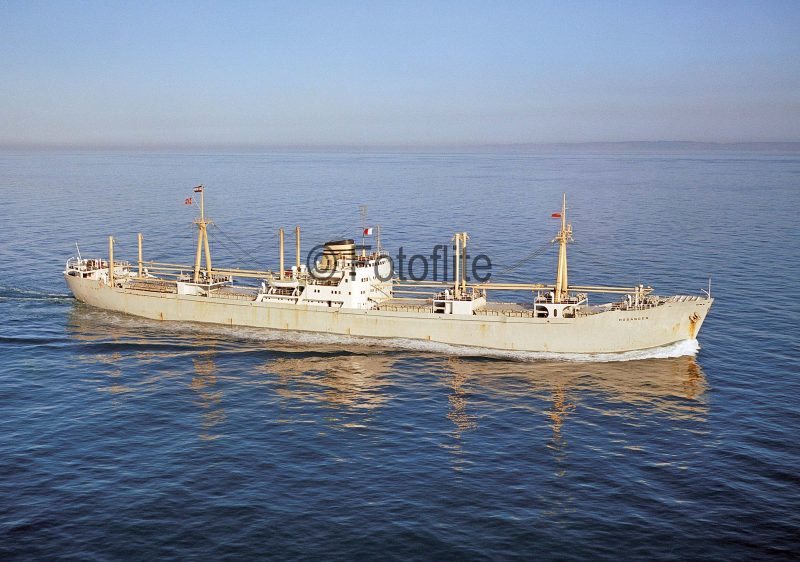
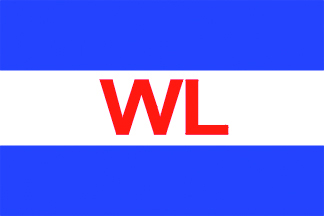
![]() Hans Westfal-Larsen founded his own shipping company in 1905, the year of Norwegian independence from the Norwegian-Swedish Union, a democratic alliance that ended with hostility between the two countries. Christian Michelsen, a shipowner from Bergen with a fleet of six ships, was Prime Minister of Norway at this time and the main architect of Norwegian independence. A vast total of 357 ships were registered in the port at this time including those sailing on the famous ‘Hurtigruten’ coastal liner service to Northern Norway.
Hans Westfal-Larsen founded his own shipping company in 1905, the year of Norwegian independence from the Norwegian-Swedish Union, a democratic alliance that ended with hostility between the two countries. Christian Michelsen, a shipowner from Bergen with a fleet of six ships, was Prime Minister of Norway at this time and the main architect of Norwegian independence. A vast total of 357 ships were registered in the port at this time including those sailing on the famous ‘Hurtigruten’ coastal liner service to Northern Norway.
Hans Westfal-Larsen had been born in Bergen in 1872 and was employed in the shipping company of Rasmus F. Olsen for 16 years prior to 1905, and he had also attended business and engineering courses in Bergen. He signed a contract on 27th February, 1905 for a steamer of 1,500 dwt with the local Bergens Mek Verksted yard to be employed in the North Sea timber and coal trades. He personally took 11/100 ths shares in the ship, with the shipbuilder taking five shares, and there were 37 other part owners from the Bergen area. Hardanger was launched at Bergen on 26th September, 1905 and delivered on 6th October, 1905.

Hans also took over the management of the steamer Venezia in 1905, unfortunately she was wrecked soon afterwards, and the steamer Garibaldi of 768grt built at Stavanger in 1902. Further new steamers of 1,500 dwt followed in 1906/07 from a Stavanger yard in Mauranger and Geiranger, and Malmanger of 2,000dwt in 1910 from Sunderland Shipbuilding Co. Ltd., and Hosanger of 2,500dwt in 1911 from Bergens Mek Verksted. Similar second hand steamers were also purchased e.g. the French steamer Loiret was purchased in 1912 and renamed Evanger. Ships continued to be managed for other Norwegian owners e.g. Ole Bull, named after the Norwegian musician, and Jamaica, both for C. Mathisen of Bergen, and the tramp steamer Prosper III for Hans Kier & Company A/S of Drammen. Hans was managing a fleet of a dozen steamers on the outbreak of war in August, 1914, eleven of which were lost to enemy action or marine causes during the war:-
- 1.1.1915 Jamaica (built 1892) wrecked in a storm off Oporto
- 14.6.1915 Davanger (built 1888) sunk by German submarine while on a voyage from Liverpool to Archangel
- 7.8.1915 Geiranger (built 1907) sunk by a German submarine while on a voyage from Petschora to Southampton
- 6.7.1916 Prosper III (built 1912) mined and sunk in the Bay of Biscay with the loss of 29 lives.
- 13.12.1916 Kaupanger (built 1890) sunk by submarine off Cartagena while on a voyage from England to Italy
- 12.1916 Mauranger (built 1906) disappeared without trace while on a voyage from Pomeron to Goole
- 11.1.1917 Ole Bull (built 1901) sunk by torpedo or mine while on a voyage from Hartlepool to Rouen
- 14.3.1917 Davanger (built 1916) sunk by German submarine while on a voyage from New York to Rotterdam
- 22.3.1917 Malmanger (built 1916) sunk by torpedo or mine off the south coast of Ireland while on a voyage from New York to Avonmouth
- 8.5.1917 Leikanger (built 1916) sunk by torpedo near Machichoco Light House
- 11.10.1917 Lovli (built 1916) sunk by torpedo near Savona
The first tanker Malmanger was one of the above losses, she was sunk by torpedo or mine near the Fastnet at the end of her maiden voyage from New York, having been completed at Chester (Pennsylvania). The war period was a hectic time of inflated ship prices, and Hans bought 13 ships for resale at high profits, and he ended the war with six ships with three on order at shipbuilders.
A large fleet of a dozen tankers was then built up during the inter-war years, with a new Malmanger in 1920 from the Laing yard at Sunderland, followed by the Davanger, Langanger and Storanger from the Clyde, with Dutch yards building Nordanger, Finnanger, Hallanger and Varanger, a French yard at Le Trait built Orkanger, and Spinanger came from the Schichau yard at Danzig. These tankers were all in the range of 11,000dwt to 14,600dwt and were on charter to the oil majors such as Shell and Esso. The motor tanker sisters Eidanger and Sandanger of 14,700dwt were completed during 1938 at the Laing yard at Sunderland, and their design was later chosen by the Admiralty as one of the three standard tanker designs of World War II. The ‘Norwegian’ type of 14,700 dwt were constructed by two yards, the lead Laing yard at Sunderland and the Haverton Hill yard of the Furness Shipbuilding Co. Ltd.. Empire Opal was the first of 21 examples of this design when she was launched at Sunderland on 28th April 1941 and this class made a big contribution to the final victory, with some survivors used by Norwegian shipowners after the war.
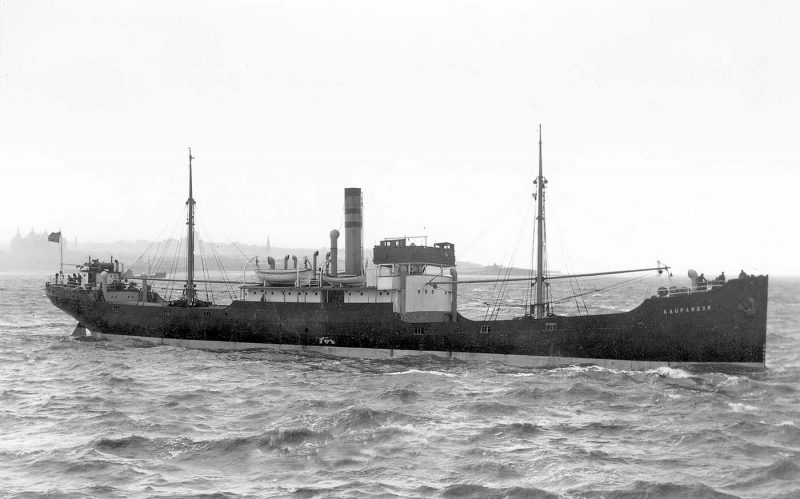
Tramping was continued throughout the inter-war period, with the steamer Hosanger dating from 1910, and the war construction Porsanger, Samnanger, Ravnanger and Torvanger sailing the world with a wide variety of cargoes. However, a big thrust into the liner trades was also made at this time using new motorships:-
County Line Canada Steamship Lines (CSL) began in 1921 a service from the St. Lawrence to European ports. Several ships were chartered from Westfal-Larsen including Evanger built in 1920, while Tananger purchased from Swedish owners in 1924 received a ‘County’ name in 1929 as Labelle County, named after a Canadian county. The service was discontinued in 1961.
Westfal-Larsen Line In 1925 a service was established between West coast U.S.A. and Canadian ports with timber and fruit southwards around South America, returning with coffee and sugar via the Panama Canal to west coast ports. The service was discontinued in 1982, having used chartered ships in the last years.
Interocean Line In 1930 a service was established between West coast U.S.A and Canadian ports to European ports. A wide variety of timber, fruit and vehicle cargoes were carried until the service was discontinued in 1970
Southern Cross Line In 1939 a joint service was established between North and South America in conjunction with J. Ludwig Mowinckels of Bergen, and ran until discontinued in 1960. All of the cargo-liners used on these four services had accommodation for 12 passengers.
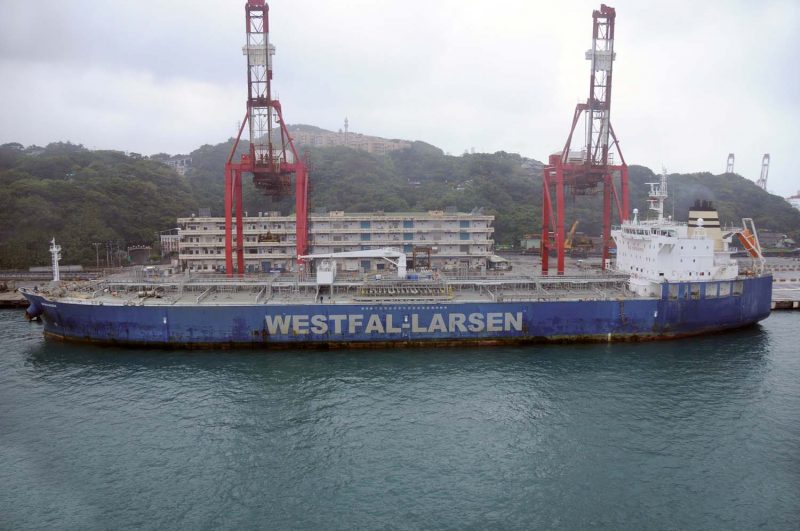
Two steamers completed at the Lithgow yard at Port Glasgow in 1924, Leikanger and Hardanger, together with a dozen new motorships were used on these long haul liner services. A trio of twin screw part refrigerated motorships was completed in 1929 at the Armstrong yards on the Tyne as Brimnanger, Hindanger and Villanger, while four motorships were completed by the famous Burmeister & Wain yard at Copenhagen as Brandanger of 1926, Hoyanger of 1926, Taranger of 1930 and Heranger of 1930, and the Dutch Nederland yard at Amsterdam completed Berganger, Moldanger and Trondanger in 1932/33. Finally, two motorships were completed at Fiume in Italy shortly after the outbreak of war in 1939 as Grenanger and Siranger. This pair were put into service on the Westfal-Larsen Line, far way from the war zone, but were transferred in 1942 to Atlantic service, and both were sunk. Siranger was torpedoed and sunk on 23rd October 1943 while on a voyage from New York and Trinidad to Takoradi and Douala with 7,300 tons of general cargo including trucks, road vehicles and oil tank cars. Grenanger was torpedoed, shelled and sunk on 11th April 1942 while on a voyage from Buenos Aires and Santos to New York with coffee and general cargo, fortunately all of the crew were saved.
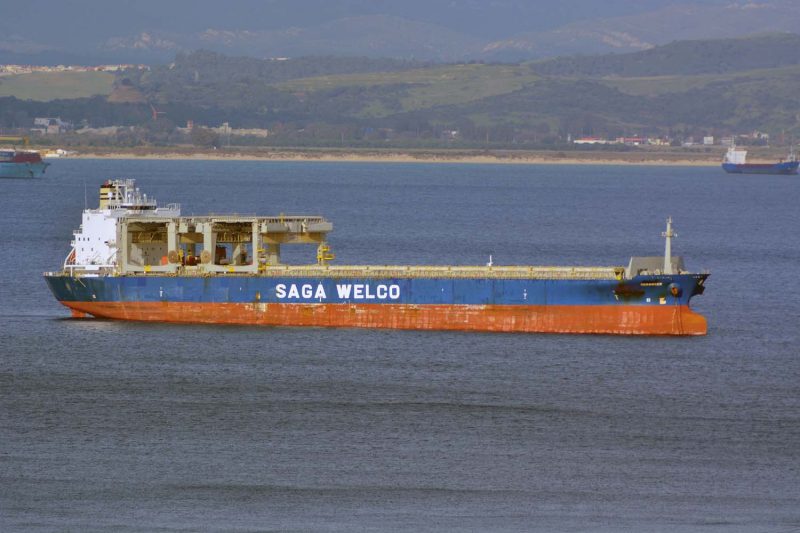

One amusing incident took place in the inter-war years, when the smaller collier Falkanger of 1,552 grt was engaged in the North Sea coal trades. She had been completed in 1923 at the local Bergens Mek Verksted yard, and on 1st February 1925 sailed from Bergen to the Tyne to load coal. However in the middle of the North Sea her propeller was damaged and she could not complete her voyage. Undeterred, with a strong westerly wind blowing the crew hoisted four large sails, two each on her two masts, using tarpaulins and a course was set for the Lista lighthouse. Three days later, the ship sailed into Kleven port near Kristiansand and repairs were made to the propeller. She sailed again on 15th February for the Tyne and arrived safely two days later. Unfortunately, she traded for only another three years before being lost in the North Sea in 1928.
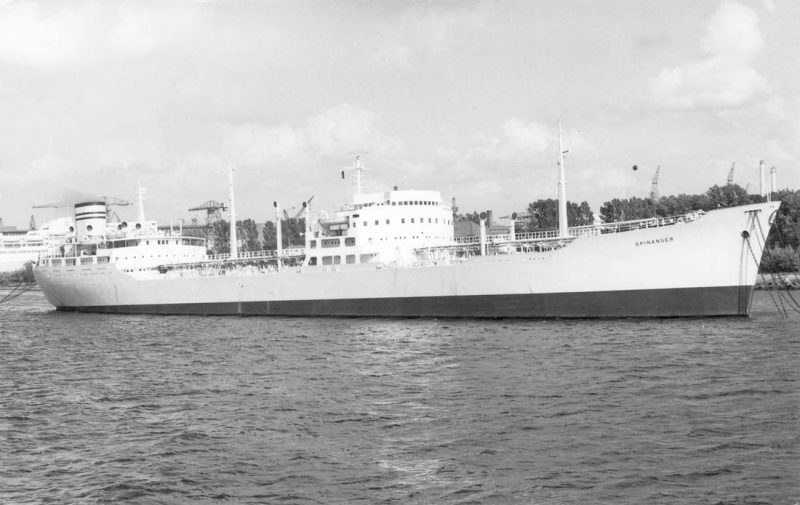
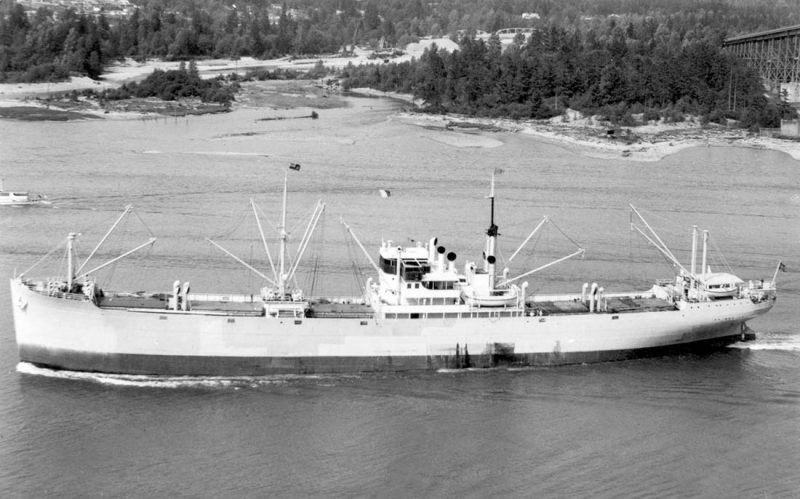
In 1938, Westfal-Larsen had become the largest tanker owner in Norway, and was the largest shipowner in Bergen with 60% of the liner tonnage of the port. However the big fleet of 24 cargo-liners and a dozen tankers was to be decimated during World War II, losing 22 ships. In 1940 alone, five fine ships were sunk with the loss of 54 crew members. In comparison, the J. Ludwig Mowinckels fleet of 19 ships lost only seven to enemy action. Bergen Line also lost only 22 ships during this long and costly war. Several company tankers, which were prime targets for the U-boats, were lost including Varanger, torpedoed and sunk on 25th January 1942 off Atlantic City (New Jersey) while on a voyage from Curacao to New York with oil. Fortunately all of her crew were saved as she remained afloat with her fore part above the sea for some time before she sank. Orkanger was torpedoed and sunk in the Mediterranean on 12th June, 1940 while on a voyage from Suez to Malta. Davanger was torpedoed and sunk 300 miles W of Ireland on 11th October 1940 while on a voyage from Curacao to Liverpool. Eidanger was torpedoed and sunk 300 miles East of St. John’s (NFL) on 24th February 1942 while on a voyage from Belfast to Mobile in ballast. Malmanger was torpedoed and sunk in mid-Atlantic on 9th August 1942 while on a voyage from Trinidad to Pointe Noire (Congo). Hallanger was torpedoed and sunk in the Western Mediterranean on 30th March 1943 shortly after sailing from Algiers for New York. Sandanger was torpedoed and sunk on 12th May 1943 in mid-Atlantic while on a voyage from New York to Belfast and Swansea. Finally, Langanger had been seized at Port de Bouc near Marseilles, and was scuttled in August 1944, refloated and repaired at Marseilles and sold on to Swiss owners.
The Westfal-Larsen tanker and liner fleet had to be completely rebuilt and restored after the war. The Norwegian authorities favoured the company due to its very heavy losses when allocating new war-built American tonnage. Two new ships that had been seized by Germany were returned. In addition the company was allocated seven American standard ships and one German replacement ship in the years immediately after the war. The cargo-liner Falkanger building at the Nakskov yard in Denmark had been seized by Germany in 1940, completed in 1943, and returned in 1945 and served the company for 20 years until sold to Greeks for further service. The tanker Austanger building at the Odense yard in Denmark was similarly seized and returned in a damaged condition in 1945, repaired and sailed on until scrapped in 1960. The German East Africa Linie Ulanga of 9,420dwt was completed in 1940 at the Bremer Vulkan yard with part refrigerated capacity and accommodation for 12 passengers. In 1947, she was allotted to the company by the Norwegian Government and renamed Taranger, and served the company for 20 years.
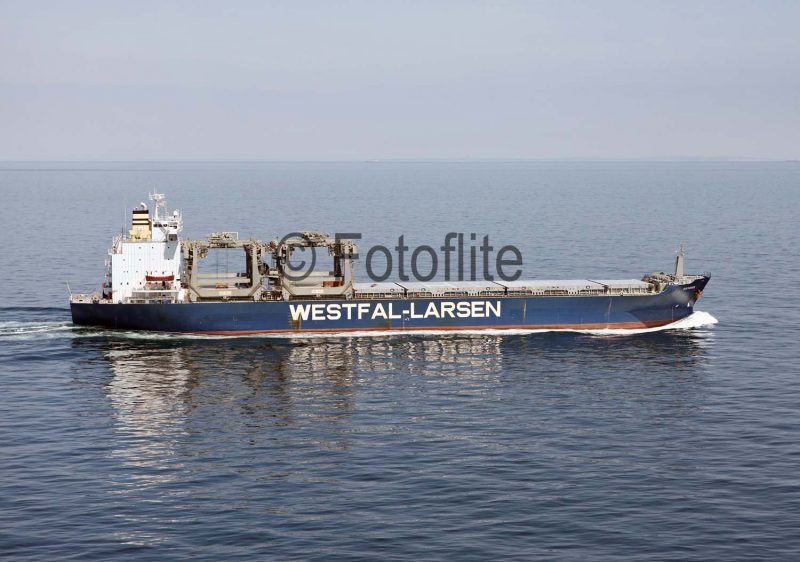
Five C1-A cargo ships were allocated to the company to restart the liner services, and were renamed as Eidanger, Grenanger, Hindanger, Ravnanger and Siranger, and a ‘Liberty’ ship was renamed Kent County for the County Line service of Canada Steamship Lines. A big fleet of 17 new cargo-liners with part refrigerated capacity and accommodation for 12 passengers was then built by Norwegian, Swedish, and British yards between 1948 and 1965. They increased in size from Brandanger of 9,250 dwt in 1950 to Fauskanger of 12,750dwt, and all had light grey hulls, yellow funnel with a black top and two thin black bands and bridge ‘midships and were a credit to the company on their long haul services. The tanker fleet received the allocated T2 tanker Hallanger in 1948, and then 14 new tankers were completed for the company between 1950 and 1964, with the first being the eponymous H. Westfal-Larsen of 16,080dwt from the Kockums yard in Malmo. Storanger was the largest at 33,000 dwt when completed by the Rosenberg yard at Stavanger in 1959.
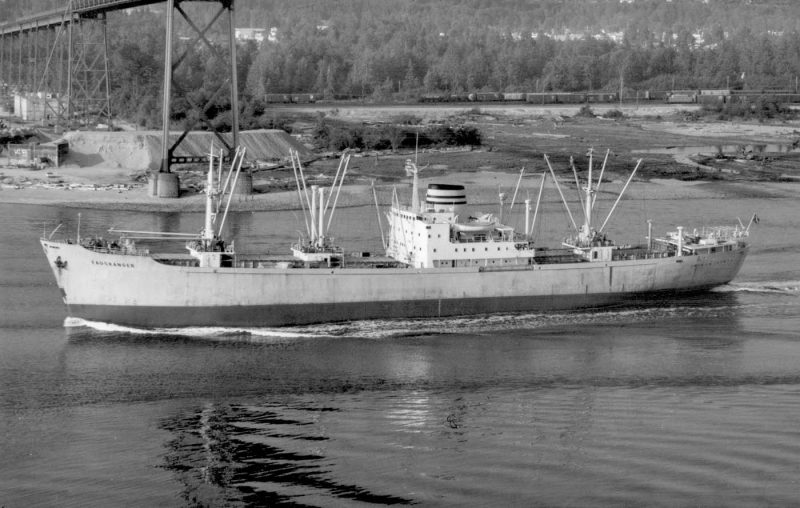
By 1955, the company cargo-liner and tanker fleets had been restored to pre-war levels. The company particularly concentrated on the Interocean Line from West coast American and Canadian ports, advertising a fast, direct service via the Panama Canal to Europe. The company’s yellow funnel with a black top and two thin black bands were regularly seen on the Thames on this service. The smallest new ship in the fleet was the raised quarterdecker collier Mauranger of 2,474grt, which had been completed at La Spezia in 1948 and was sold after seven years service to Kristian Jebsen of Bergen and as Korsnes continued her North Sea and Baltic trading. There were problems with flag discrimination on the South American services by 1960, and the company had to diversify in the early 1960s. An important forestry products trade began as a result of a business venture in 1962 with the Star Shipping Company of Per Waaler. Per Grieg, a descendant of shipbroker Capt. Joachim Grieg of Bergen who began his business in 1884, was also one of the investors, and later increased his stake in the associated A/S Billabong shipping company to 100%.
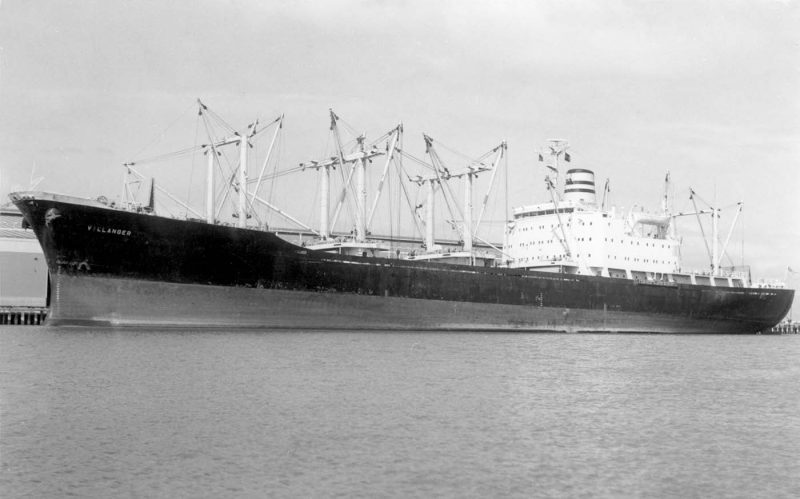
The Star Shipping A/S consortium began a new trade of wood pulp and paper from West coast Canadian and American ports in 1964 when Westfal-Larsen took delivery of the first of three forest products bulkers of 24,600dwt in Falkanger, Fjellanger and Fossanger, all equipped with one large Munck gantry crane for the loading and discharge of cargo from the quayside without the use of port cranes. Seven forestry products carriers equipped with two Munck gantry cranes were then ordered for Star Shipping for delivery in 1968/69 with ‘Star’ prefixes to their names. The Westfal-Larsen ships operating in the Star Shipping consortium had two stars placed on a white panel on their funnels above the two thin black bands. Many other sisters were then built for British, Greek and Norwegian owners and long-term chartered to Star Shipping. By 1990, Star Shipping was operating a fleet of 50 owned and chartered forestry products bulkers, and in 1995 the Westfal-Larsen holdings in Star Shipping were transferred to the newly established Masterbulk (Pte) Ltd. in Singapore, a Westfal-Larsen subsidiary. The other partner was now known as the Grieg Billabong Group of Bergen, and by 2005 the Star Shipping consortium had a fleet of 70 owned or chartered bulkers, including 40 open hatch gantry craned bulkers all with a ‘Star’ prefix to their names. Their funnel colours are yellow with two blue stars on a white panel with blue top and bottom fringes. A forestry products terminal was owned at Squamish in British Columbia, and the consortia also offered frequent container services between U.S. Gulf and Eastern Seaboard ports to Europe.
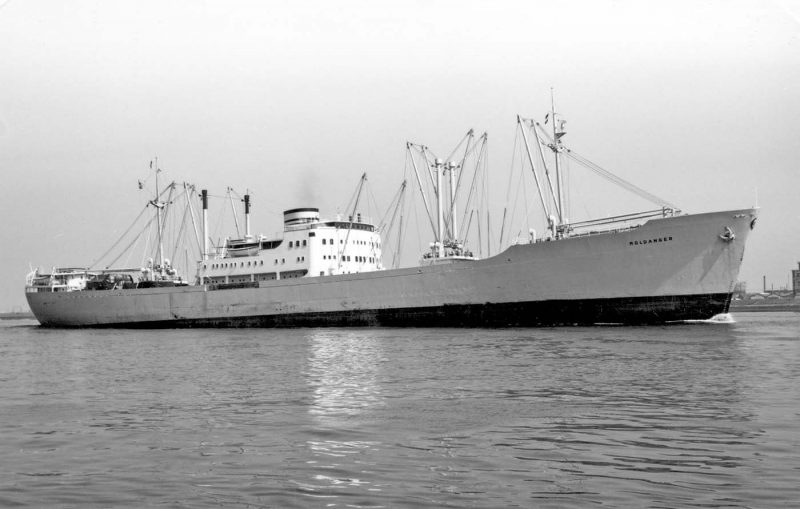
The company tanker fleet encountered problems in the international tanker market around 1960, and led Westfal-Larsen into the chemical tanker trade. The company entered into co-operation with Odfjell Tankers of Bergen in 1964, with Austanger and Grenanger completed that year as specialised chemical tankers operating in the Odfjell Storli pool. In 1980, this co-operation was formalized through the establishment of Odfjell Westfal-Larsen Tankers A/S and ten years later the Westfal-Larsen chemical tanker fleet of 13 tankers was sold to Odfjell Storli A/S. Rederiet Odfjell A/S had been founded by the ship masters Abraham and Frederik Odfjell in 1914. The company moved into small chemical tankers in 1947 under the leadership of Brodrene Odfjell, and their first stainless steel tanker was completed in 1960. Skibs A/S Storli was then formed with larger chemical tankers delivered by the Akers and Moss yards in Norway with ‘Bow’ prefixes to their names e.g. Bow Cedar of 21,725dwt. The Storli Odfjell Group later became the largest owner of chemical tankers worldwide, with 40 tankers deployed transporting over 10 million tonnes of cargo each year, covering 355 different grades of petroleum products, vegeatable oils, chemicals and acids.
In their centenary year of 2005, Westfal-Larsen was operating a fleet of 28 ships of 1.2 million dwt, with 24 specialized forestry products open hatch gantry craned bulkers with ‘Star’ prefixes to their names, three chemical tankers Fossanger, Mauranger and Moldanger, and the LPG gas tanker Nordanger of 59,500dwt built in 1992 at Ulsan and purchased in 2001. The largest forestry products bulkers were the new Star Optimana, Star Okiana, Star Osakana and Star Oshimana of 48,665dwt completed during 2003/04 by the Oshima yard in Japan and equipped with two gantry cranes of 68 tonnes capacity. The management of the fleet was split between Westfal-Larsen Management A/S of Bergen and Masterbulk (Pte) Ltd. of Singapore. However, an announcement was made on 19th June 2008 that the two partners in Star Shipping, Westfal-Larsen and the Grieg Billabong Group, were to split the fleet after a difference of opinion about the future direction of Star Shipping. Westfal-Larsen had 19 open hatch gantry craned forestry product bulkers at this time, and Grieg Billabong had 23 ships of this type, with Grieg also taking over the conventional bulker fleet of Star in the split. However, the co-operation in the modified new structure of Star Shipping from the main Star office in Bergen was to continue.
The Westfal-Larsen brothers, Rolf and Hans Petter, are now involved in the ownership of a huge fleet. At the beginning of 2015, Westfal-Larsen Shipping A/S and Saga Forest Carriers International A/S entered into a joint agreement to form a joint shipping pool operation comprising 52 modern OHGC bulkers. The pool is managed by the joint venture company SAGA WELCO A/S, and combines the OHGC fleets of Westfal-Larsen A/S, Masterbulk (Pte) Ltd., Saga Shipholding (Norway) A/S, and Attic Forest A/S (Hesnes Group).
Saga Forest Carriers International A/S was established in 1991 by the Norwegian shipowners, Aaby and Borgestad, as well as NYK of Japan. The Norwegians withdrew four years later, and the Saga Head Office was moved in April 2000 from Atlanta to Tenvik near Tonsberg, the oldest city in Norway. Leif Hoegh was a member of the pool from 2003 to 2009, replaced by Attic Forest A/S (Hesnes Group). Regional offices are in Bergen, Vancouver, Savannah, Rio de Janeiro, Antwerp, Livorno, Tokyo, Seoul, Shanghai and Singapore. It is part of the Hesnes Group with black, green and blue funnel colours with a central stylised ‘S’, and orange hulls with ‘SAGA’ in black on both sides. A British owned OHGC bulker is in this fleet as Saga Andorinha, completed as Andorinha in September 1998 at Oshima in Japan for Denholm Line Steamers Ltd. of Glasgow. She is equipped with two gantry cranes of 40 tonnes capacity and can carry 400 TEU of containers and 47,027 tonnes of forestry products. She was taken on charter by Saga Forest Carriers in 2001.

Westfal Larsen today are involved in the transportation of chemicals, dry bulk open hatch cargoes, as well as real estate, retail and technology industries. There are twenty open hatch dry bulkers operating in the SAGA-WELCO A/S pool, named as Geiranger, Grindanger, Hardanger, Heranger, Hosanger, Hoyanger, Ikebana, Indiana, Inventana, Isoldana, Mariana, Mobilana, Okiana, Optimana, Osakana, Oshimana, Panamana, Pelicana, Posidana, and Providana. There are eight chemical tankers in the fleet, named as Falkanger, Fauskanger, Finnanger, Fjellanger, Taranger, Torvanger, with the latest pair of 50,000 dwt completed by the Hyundai Mipo yard as Lindanger (Yard number 2503) and Leikanger (Yard number 2505). They are of length 186 metres with a moulded beam of 32.23 metres, and have ‘WESTFAL LARSEN’ in bold white letters on the their orange hulls, as well as ‘Powered by Methanol’. This is a reference to the liquid bunker fuel of methanol that can be used to supplement their normal fuel.
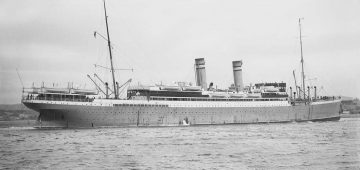
Comments
Sorry, comments are closed for this item